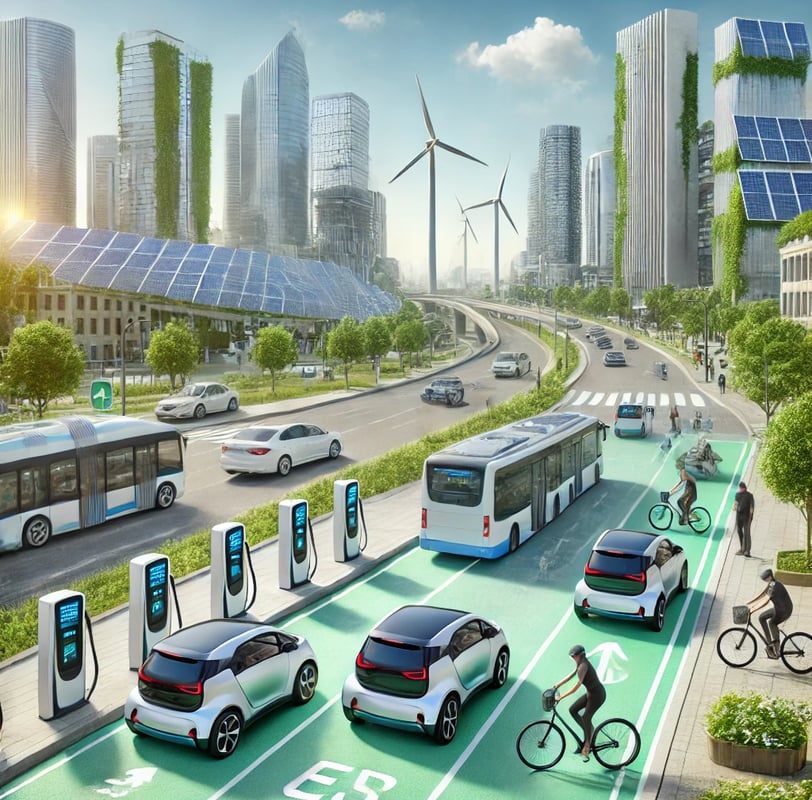Innovation in Transportation and Electric Vehicles: The Future of Eco-Friendly Mobility
The transportation sector is undergoing a major transformation with the rise of electric vehicles (EVs). As concerns about climate change and air pollution grow, there is an increasing demand for sustainable and efficient transportation solutions. Governments, automakers, and consumers are investing in EVs, leading to discussions about charging infrastructure, new vehicle models, and incentives to encourage adoption.
2/19/20252 min read


The Rise of Electric Vehicles
Electric vehicles have gained significant traction in recent years, driven by advancements in battery technology, increasing fuel prices, and stringent environmental regulations. Companies such as Tesla, Rivian, and traditional automakers like Ford, Volkswagen, and Toyota are expanding their EV lineups to cater to a growing market. The benefits of EVs include:
Reduced Carbon Emissions: EVs produce zero tailpipe emissions, helping reduce greenhouse gases and urban pollution.
Lower Operating Costs: Electricity is generally cheaper than gasoline, and EVs require less maintenance due to fewer moving parts.
Government Incentives: Many countries offer tax credits, rebates, and subsidies to make EVs more affordable for consumers.
Technological Advancements: Innovations in battery efficiency, regenerative braking, and smart connectivity enhance the driving experience.
Charging Infrastructure: Overcoming Challenges
One of the biggest concerns surrounding EV adoption is the availability of charging infrastructure. Governments and private companies are working to expand charging networks to support the growing number of electric vehicles. Key developments in this area include:
Fast-Charging Stations: High-speed chargers can replenish an EV’s battery in under 30 minutes, making long-distance travel more convenient.
Home Charging Solutions: Many EV owners install Level 2 chargers at home, allowing overnight charging.
Wireless Charging Technology: Emerging solutions involve inductive charging, where vehicles can charge without plugging in.
Grid Integration: Smart grids and vehicle-to-grid (V2G) systems enable EVs to contribute to energy stability by supplying electricity back to the grid during peak hours.
Emerging Models and Innovations
The electric vehicle market is expanding rapidly with new models that cater to different consumer needs. Some notable trends include:
Longer Range Vehicles: Improvements in lithium-ion and solid-state battery technology are extending EV range beyond 400 miles per charge.
Electric Trucks and Commercial Vehicles: Companies like Rivian, Tesla, and Ford are launching electric pickup trucks and delivery vans to reduce emissions in the logistics sector.
Autonomous and Connected Vehicles: EVs are integrating AI-driven self-driving features and connectivity with smart cities.
Hydrogen Fuel Cell Vehicles: While not strictly electric, hydrogen fuel cells provide an alternative zero-emission solution for heavy-duty transport.
Government Policies and Incentives
To accelerate EV adoption, many governments worldwide are implementing policies and incentives such as:
Tax Credits and Subsidies: Reducing the upfront cost of EVs for consumers and businesses.
Emission Reduction Targets: Phasing out gasoline and diesel-powered vehicles by setting deadlines for an all-electric future.
Investment in Charging Networks: Funding the expansion of public and private charging infrastructure.
Mandating Automaker Compliance: Requiring car manufacturers to meet emission standards and increase EV production.
The Future of Electric Mobility
The shift towards electric transportation is not just limited to passenger cars. The future of sustainable mobility includes:
Electric Aviation: Companies are developing electric aircraft to reduce aviation emissions.
High-Speed Electric Trains: Investment in rail infrastructure is making train travel faster and more energy-efficient.
Electric Buses and Public Transport: Cities are transitioning to all-electric public transit to improve air quality.
Micromobility Solutions: E-bikes and e-scooters are becoming popular urban transport alternatives.
Conclusion
Innovation in transportation and electric vehicles is shaping a cleaner and more sustainable future. As battery technology advances, charging infrastructure expands, and governments continue to support eco-friendly initiatives, the transition to electric mobility is set to accelerate. With ongoing research and development, the dream of a world powered by renewable and efficient transportation is becoming a reality.
Explore
Discover diverse topics in one convenient hub.
Connect
Learn
contact@mindstormblog.com
© 2025. All rights reserved.

